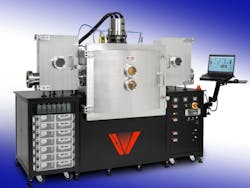U.S. Navy Backs Research into Laser Tool to Test for Superconductor Damage
A researcher at the Advanced Manufacturing Institute and the Texas Center for Superconductivity at the University of Houston found a way to cut superconductor failures, enabled by a pulsed laser deposition tool.
The thin film deposition instrument will be purchased with an $800,000 grant from the U.S. Office of Naval Research.
At extremely low temperatures (as low as cryogenic temperatures), superconductors allow electric current to flow without resistance and produce strong magnetic fields.
This is the principle behind magnetic resonance imaging (MRI) machines, particle accelerators used for subatomic physics research, magnetically levitated high-speed trains deployed in Japan and minesweepers being developed by the U.S. Navy to detect undersea mines.
Quench refers to a sudden transition from a superconducting state to a normal state. When a coil, magnet or cable that carries hundreds of amperes in a superconducting state suddenly quenches at a localized region, that portion of the coil, magnet or cable will be irreparably damaged.
Thin films are very thin layers of material that scientists can deposit or apply onto surfaces to achieve properties not seen in a bulk form of the material. They offer a wide range of benefits and are used in various industries, including electronics, energy, optics, sensing and others.
Although magnet quenches are fairly routine, in 2008 at CERN’s Large Hadron Collider, a magnet quench caused damage to more than 50 superconducting magnets.
The PLD will also be used in other projects and underwritten by the U.S. Navy, including improving energy storage and propulsion systems, enhancing high-performance of solid-state, flexible batteries and reducing fuel consumption and surface corrosion of ships.
About the Author
T&D World Staff
Content Team
Nikki Chandler
Group Editorial Director, Energy
[email protected]
Jeff Postelwait
Managing Editor
[email protected]
Christina Marsh
Senior Editor
[email protected]
Ryan Baker
Associate Editor
[email protected]
Amy Fischbach
Electric Utility Operations
[email protected]
Rich Maxwell
Community Editor
[email protected]
Gene Wolf
Technical Editor
[email protected]
